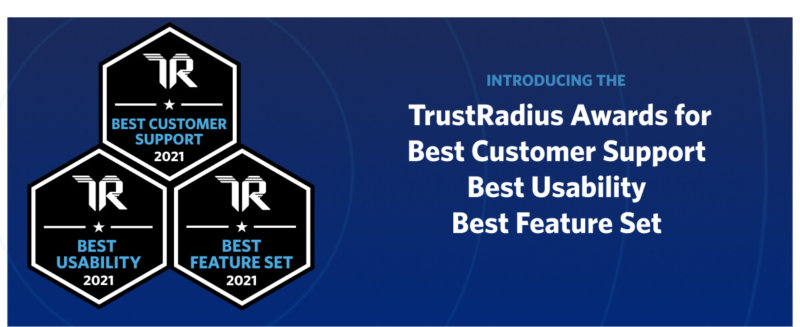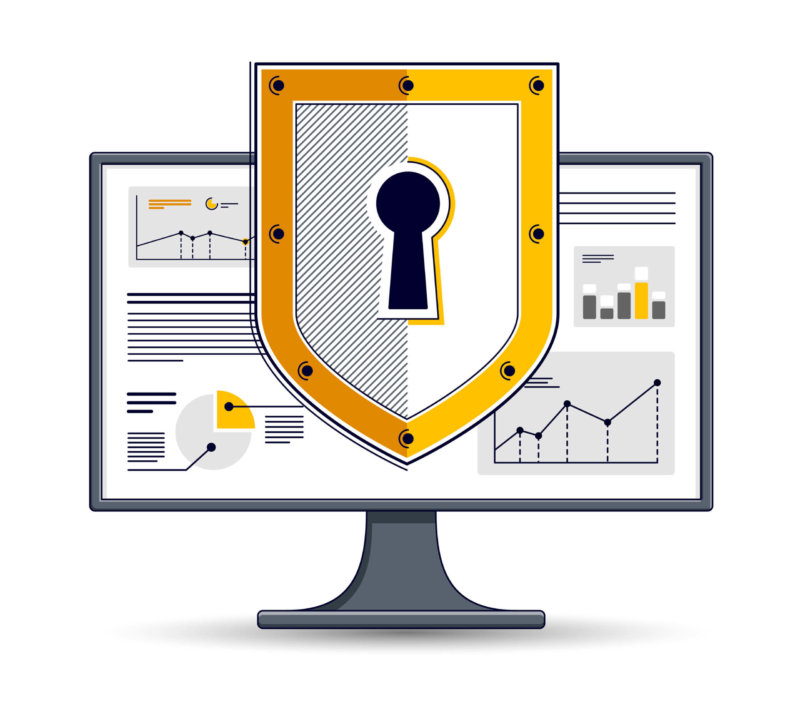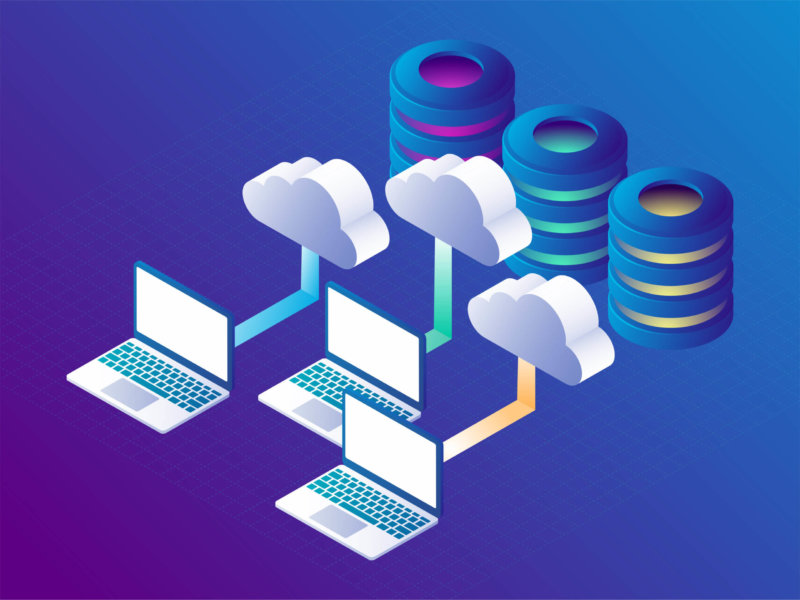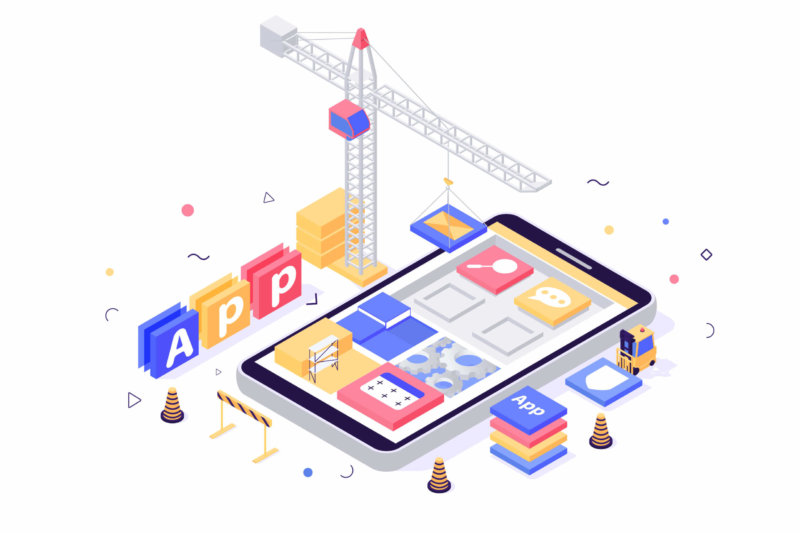B2B Connection
Information and resources for technology buyers
Process Automation Software streamlines business applications by integrating loosely coupled, long-running, heterogeneous business processes, and systems into a seamless and largely automated transaction. This often occurs either within or between businesses with minimal use of coding, through a unified management console overseeing the entire workflow. This year, TrustRadius is awarding the best in customer support, feature set, and usability among some of the most common categories of Best of Process Automation in use today. The Best of Process Automation winners are: Best Feature Set – Low-Code Development UiPath Process Mining (formerly ProcessGold), 1st Place Best Customer Support – Process Mining UiPath Process Mining (formerly ProcessGold), 1st Place Best Customer Support – Robotic Process Automation UiPath Enterprise RPA Platform, 1st Place Best Feature Set – Robotic Process Automation UiPath Enterprise RPA Platform, 1st Place Best Customer Support – Workload Automation cPanel, 1st Place Best Feature Set – Workload Automation cPanel, 1st Place Best Process Mining Customer Support Process mining is related to BPM planning, and involves searching data logs generated by enterprise applications for potential sources of process improvement via automation. Customer support would be key in this area in order to allow process to flow smoothly and successfully. Below are […]
This year, TrustRadius is recognizing products which have earned a 2021 Best Of Award. The awards being celebrated include Best Customer Support, Best Usability, and Best Feature Set. The Best of Storage category includes 5 sub-categories that provide users with a variety of storage based tools. The winning software products in this category have been rated and reviewed by users over the last year, and must meet high rating standards in order to qualify for each Best Of Award. This year, the Best of Storage winners for Storage are: Best Customer Support – Cloud Storage Google Drive, 1st Place Dropbox Business, 2nd Place Box, 3rd Place Best Feature Set – Cloud Storage Google Drive, 1st Place Box, 2nd Place OneDrive, 3rd Place Best Customer Support – Enterprise Flash Array Storage Pure Storage FlashArray, 1st Place Best Usability – Enterprise Flash Array Storage Pure Storage FlashArray, 1st Place Best Customer Support – Object Storage Google Cloud Storage, 1st Place Best Feature Set – Object Storage Google Cloud Storage, 1st Place Best Customer Support – Software-Defined Storage (SDS) StarWind Virtual SAN, 1st Place Best Customer Support – Rack Servers HPE ProLiant DL, 1st Place Dell PowerEdge R, 2nd Place Best Usability – […]
Application Management refers to software that manages the performance and availability of a broad range of applications within an organization. This often includes network services as well as cross-program communication. This year, TrustRadius is awarding the best in Customer Support, Feature Set, and Usability among some of the most common categories of Best of Application Management in use today. The Best of Application Management winners are: Best Feature Set – API Management Postman, 1st Place Best Customer Support – Application Delivery Controllers (ADC) Kemp LoadMaster, 1st Place Best Usability – Application Delivery Controllers (ADC) Kemp LoadMaster, 1st Place Best Feature Set – Application Delivery Controllers (ADC) Kemp LoadMaster, 1st Place Best Usability – Application Performance Management SolarWinds Server & Application Monitor, 1st Place Best Customer Support – Observability Tools Dynatrace, 1st Place Best Feature Set – Observability Tools Dynatrace, 1st Place Best API Management Feature Set An Application Programming Interface (API) allows individual programs to communicate with one another directly and use each other’s functions. API Management software allows for developers to then manage those parameters. Because API management enables developers to write applications that interact with backend systems, it is important to have a broad set of features that […]
For this installation of our 2021 Best of Awards, we are focusing on a broad uber-category of software we’re referring to as “infrastructure-related”. Now, seasoned IT professionals might raise an eyebrow at this nomenclature, and we totally understand. When deciding which software categories to feature of the Best of Awards, we wanted to feature categories together that made the most sense. For the sake of this uber-category, infrastructure refers to the foundation of any IT service. Below you’ll see software ranging from virtualized hardware components to the much more widely familiar Operating Systems category. Without further ado, here are the Best Infrastructure-related software of 2021: Hyper-Converged InfrastructureScale Computing HC3, Customer Support, 1st PlaceNutanix AOS, Customer Support, 2nd Place Scale Computing HC3, Usability, 1st Place Scale Computer HC3, Feature Set, 1st Place IT Infrastructure MonitoringLogicMonitor, Customer Support, 1st Place IT Service ManagementTOPdesk, Customer Support, 1st PlaceJira Service Desk, Customer Support, 2nd PlaceServiceNow IT Service Management, Customer Support, 3rd Place TOPdesk, Usability, 1st Place Jira Service Desk, Feature Set, 1st PlaceSysAid, Feature Set, 2nd PlaceServiceNow IT Service Management, Feature Set, 3rd Place Message Oriented MiddlewareAmazon Simple Notification Service (SNS), Customer Support, 1st Place Amazon Simple Notification Service (SNS), Usability, 1st Place Amazon […]
If you’re beginning your new year with search for new Data Management tools, we’ve got you covered. We’ve compiled a list of the best Data Management products on the market according to real users. The Best Customer Support award recognizes vendors with support teams that provide users with quality assistance and troubleshooting. Best Usability awards products that are easy-to-use and truly intuitive. Best Feature Set shines a light on stand-out software that has everything a buyer could possibly want (or not want!) Here are the Best Data Management tools of 2021: Data CleansingDataloader.io, Usability, 1st PlaceDataloader.io, Feature Set, 1st Place Data IntegrationAstera Centerprise, Customer Support, 1st PlaceMatillion, Feature Set, 1st Place Data Management PlatformAdobe Audience Manager, Customer Support, 1st PlaceAdobe Audience Manager, Usability, 1st PlaceAdobe Audience Manager, Feature Set, 1st Place Managed File TransferFileZilla, Customer Support, 1st PlaceFileZilla, Feature Set, 1st Place Relational DatabasesMicrosoft SQL Server, Customer Support,1st PlaceSAP HANA, Customer Support, 2nd Place Microsoft SQL Server, Feature Set, 1st PlaceSAP Hana, Feature Set, 2nd Place Data Cleansing Maintaining a business in the age of information means that businesses need powerful tools to keep data organized and accessible. Sorting through redundant data wastes time and can become intensely tedious. Dataloader.io […]
Dropbox was an early entrant in the cloud storage space and continues to offer a strong cloud storage option for businesses. Given that it’s singularly focused on cloud storage, Dropbox Business includes specialized features such as data recovery and encryption at all price points. Dropbox Business pricing is largely transparent and simple, with only 3 plans, all of which are feature complete and all inclusive. We’ve collected all of the pricing information relevant to DropBox Business for businesses that are considering the product. Below you will find a table synthesizing Dropbox Business’ pricing options, and how they differ from each other. We’ve also included information on discounts so your business can find the best deal possible if you decide to purchase Dropbox Business. Dropbox Business Pricing Plan Cost Cloud Storage Per User Standard $15.00/user/month 5 TB Advanced $20.00/user/month Unlimited Enterprise Custom Quote Unlimited Dropbox Business is offered at 3 price points, all of which are based on a monthly subscription. It is worth noting that Dropbox Business requires at least 3 users. For smaller businesses with just one or two users, Dropbox also offers a version for individual users ranging from free to $17.99 per month. The Standard pricing plan […]
The 21st Century has posed new challenges for brick and mortar businesses, particularly commercial businesses like retailers and restaurants. Retailers, such as mom-and-pop shops, face an uphill battle against online shopping. Restaurants are known for balancing on a knife’s edge of profitability, often surviving on razor-thin margins. These conditions lead many in-person sellers to look for cost-cutting measures wherever possible to keep their businesses alive and profitable. However, there are significant overhead costs that can weigh on these businesses, such as the hardware and software associated with running a brick and mortar business. The most central hardware they rely on is the Point of Sale (PoS) system. Point of Sale software allows businesses to efficiently and safely process sales in their business. However, the price of these systems can vary dramatically based on the features and scale of the systems. Fortunately, there is a range of free or freemium Point of Sale (PoS) products available to these businesses. For small businesses in particular, free PoS systems can help keep their business running with minimal overhead costs. However, not all free Point of Sale products are created equal, so it’s important for businesses to pick a system that will help instead […]
You can’t put a price on peace of mind—but it can feel like network security providers are trying their best. As network traffic continues to grow exponentially, stakes in the arms race between cyberthreats and cybersecurity measures grow. Even small businesses now consider purchasing some sort of firewall for their network to be a must, rather than a luxury. In this rapidly changing landscape, it can be difficult to know what kind of firewall capabilities you need-—or how much you should be paying for it. For instance, home office firewalls start as cheap as $200, while larger enterprise firewalls can cost hundreds of thousands of dollars. Additionally, most network firewall providers have a huge catalog of appliances, from home office firewalls to multi-branch enterprise appliances. Many network firewall products are sold through third parties as well, further complicating the pricing landscape. TrustRadius has aggregated pricing information for some of the most popular firewall products to help shed light on what pricing buyers should expect. It includes pricing information directly from suppliers where possible, as well as input from third party resellers where appropriate. This post also includes other information that buyers may find helpful, such as secondary costs connected to […]
Cloud Storage Pricing Comparison Cloud Storage options are becoming increasingly popular for businesses, and in addition to their features, their pricing structures set them apart from each other. To make it easier for you to find what cloud storage tool is right for your organization, we’ve created a detailed pricing comparison to help you find a cloud storage solution that meets your budgetary needs, and the feature needs of your business. Pricing Tier Comparison All of the most popular cloud storage options are sold as software as a service, typically with a monthly subscription, with the option of paying annually. Many cloud storage options are targeted at specific businesses, or business sizes, as represented by their costs. Google Drive, OneDrive, and EverNote all have strong features for small businesses, or enterprises with limited storage needs, which is reflected in their price. In contrast, DropBox business and Box include features such as unlimited storage and built in integrations with popular business software, making them strong choices for large enterprises or businesses with major cloud storage needs. The only cloud storage tool listed below with a forever free version for businesses is EverNote, which is designed to specialize in note storage. It […]
Data Fabric is a new category of technology that helps businesses simplify data management and accelerate the delivery of app-centric technologies. Though data fabric solutions offer a number of unique features and capabilities, they are often confused with data virtualization tools. We spoke with Dan DeMers, the CEO at Data Fabric pioneer Cinchy, to gain more insight into the key capabilities that set Data Fabric technology apart. Data Fabric technology is getting a lot of attention right now, but many people associate it with Data Virtualization or other data management software. How does Data Fabric software differ from other data management technologies? The adoption of Data Fabric technology is growing rapidly but it’s fair to say that it is not yet widely understood. This fact has not been helped by vendors claiming to represent Data Fabric technology in order to capture website traffic when they are fundamentally different in design and function. The key element that defines a Data Fabric is suggested by the word “fabric” itself. The term describes how this technology manages data as a logical network of structured datasets, and does not rely on the on-going exchange of copies between apps or data stores in order to […]
Coronavirus has presented a new reality for all of us and forced millions of people globally to work remotely. Remote work comes with its set of opportunities and challenges. The pace at which businesses must adapt to today’s rapidly changing environment far outpaces the methods and resources available to support it. Businesses across all industries are finding new and innovative ways to scale their operations, help keep their employees safe and track assets and inventory. One-way businesses are developing operational agility is by turning to low-code platforms. Low-code is a modern way to build and continually improve business software applications that better match the pace of change in today’s business environment. The low-code application development method eliminates much of the tediousness associated with developing, deploying, maintaining, and updating applications built with traditional software development frameworks and techniques. It enables team members with little to no coding experience to build the applications they need themselves.The best low-code platforms unite teams across the business to continuously innovate and improve their operations. During this time, some low-code software providers are helping businesses at the frontlines innovate and adapt quickly by offering their solutions and expertise for free. How Low-Code Platforms Support COVID-19 Response […]
Remote working is not a new trend. Research from Gallup found that the percentage of American employees working from home increased from 39% to 43% between 2012 and 2016. Some even predict that the rapid growth of employees choosing to work from home amid the covid-19 outbreak will be a turning point for the American workforce in favor of remote working. Adjusting to a new work environment is rarely easy, but there is a lot that companies can do to make this transition as smooth as possible for their employees. Providing your team with tools that enable them to communicate in real-time, manage their tasks, and schedule and host meetings are critical first steps all organizations can take. Below are 5 essential types of software that will help your employees stay productive and navigate their new WFH life: Web Conferencing Software Collaboration Tools Remote Desktop Software Virtual Private Network (VPN) Solutions VoIP Providers Remote Work Software Tools Are Booming Right Now As someone who recently started working remotely (like so many others), I now rely on Zoom for daily communication and meetings. But I would be equally lost without other tools like Slack, Google Drive, Airtable, Trello, Calendly, and of […]
If you’ve always dreamed of working from home, you’re not alone. 99% of people say they would like to work remotely, at least some of the time, for the rest of their careers. When you’re new to working from home, it can be a bit confusing on where to start looking for tools to keep you productive, organized, and most importantly sane. We’ve compiled a list of free tools that will help ease you into your transition to working from home. These tools are great for both new freelancers, college students adjusting to remotely working on group projects, and small businesses taking their business to the cloud. G Suite: Your one-stop shop First up is G-Suite, a comprehensive productivity platform that has pretty much everything you could need to work from home. Its most ubiquitous tool is Gmail, which provides users with a free email account with a custom alias. Gmail, in particular, works well with Google Calendar, which can sync multiple accounts into one calendar and can be accessed from anywhere using mobile devices. Other popular tools within the suite are Google Docs (word processor), Google Sheets (Google’s take on Excel), and Google Slides (think Powerpoint). G-Suite also contains […]
According to an industry report published last year, over 35% of websites and web applications have at least one “high severity vulnerability.” This surprisingly high statistic demonstrates the necessity of appropriate firewalls to protect your digital environment. Not all firewalls protect your systems from the same threats, in the same locations. The most common firewall products are network firewalls and web application firewalls. Understanding the differences between these two firewall types is crucial to ensuring that you have the appropriate protections in place to provide your business and clients with cutting edge online security. What are web application firewalls? Web application firewalls (WAFs) protect against vulnerabilities that are unique to public-facing web applications, like websites. Conceptually, IT security professionals divide digital security into 7 layers. Within this model, WAFs provide security at the 7th layer, known as the “application layer.” Pragmatically speaking, WAFs protect against attacks embedded in data transmitted to your web applications. There are a wide variety of web app attacks, but the most common (and critical) include: SQL injections– These malicious SQL statements can execute inside your applications to retrieve, edit, or even delete data within your SQL database. Cross-site scripting (XSS)– This is another form of […]
Email is a crucial channel for modern business communication. The software you use to power your email strategy makes all the difference— not only in what kinds of communication, personalization, and reporting you can set up, but also how easily you can do it. If you’re researching, evaluating, and/or implementing a new email platform, make sure you have a handle on your organization’s needs. The templates in this post will give you a head start on formulating your requirements and your questions for vendors. Whether you want an email marketing tool, or a fully-fledged marketing automation system, the TrustRadius community’s insights will help you find the right email service provider (ESP) for you. Email Platform Requirements Template Here is a sample list of requirements for an organization with 1,001-5,000 employees in the Information Services industry, which is an affiliate of a company with over 10,000 employees in the Financial Services industry. It was created by a real buyer in the TrustRadius community. Their marketing department was evaluating ESPs for their own use, as well as for use by other divisions of the parent company. The list includes all of their must-haves and a few nice-to-haves for a new email marketing […]
What is a Bare Metal Server? The standard definition is that it is a single-tenant server. In other words, it is a physical server-a distinct physical piece of hardware that is dedicated to a single client or tenant. Before the emergence of cloud computing, these servers were run in the corporate data center but, today, they are more typically run from colocation centers or rented on a subscription basis. Bare Metal vs. Virtualized Servers Bare metal servers are usually contrasted with virtualized servers which have become ubiquitous in recent years. Virtualized servers are machines with resources that are shared across multiple users. The physical machine is converted into multiple virtual machines, each running their own operating system. This is done by utilizing he hypervisor, which is software installed on top of the computer hardware and which creates the virtualization layer. The hypervisor manages the sharing of physical resources into virtual ones. Virtualization has been a wildly successful technology and virtual machines are running in a majority of global 2000 enterprise data centers today. Pros and Cons The big advantage of server virtualization is efficiency and utilization. Virtualization can increase resource utilization from the standard 15% to close to 80%. Virtual […]
The IaaS market is dominated by Amazon Web Services (AWS) and Microsoft Azure which together have over 60% market share. AWS alone has almost 50% share, although growth is beginning to slow. The extraordinary dominance and growth of AWS and Microsoft Azure is largely driven by organizations that have decided to exit private data centers, and firms looking to build competitive advantage through large-scale digital transformation. Iaas + PaaS Combinations The research firm Gartner has posited that the market for standalone IaaS platforms is shrinking and that these vendors will remain niche vendors. The market is moving in the direction of combined IaaS/PaaS offerings where both systems have been architected to work seamlessly together. AWS, Google, and Microsoft are all examples of vendors that combine these capabilities in a single platform. AWS offers its Elastic Beanstalk PaaS which is fully integrated with its IaaS platform. Similarly, Google offers the Google Compute Engine IaaS platform alongside Google App Engine. Microsoft Azure also offers the Azure IaaS platform with the integrated PaaS called App Service for building, deploying, and scaling web apps. Pure-play IaaS Niche vendors But what of the so-called niche players in the IaaS space? Should these vendors be on […]
PaaS is a development and deployment environment in the cloud that makes coding and deploying applications much more efficient for developers and IT professionals. It is a platform for building scalable software delivered over the web with modest up-front investment. There are three main PaaS platform flavors, and it’s important to understand the difference between them before investigating which product to purchase. 1. PaaS tied to a SaaS product These PaaS offerings are tightly connected to commonly-used SaaS platforms like Salesforce, Workday, or Intuit. The purpose of this kind of PaaS is to create a developer ecosystem around a SaaS application. It does this by providing a platform allowing ISVs to create new capabilities that run on the core SaaS platform. Examples of added capabilities might be custom business processes, platform extensibility, data model customization, or a broad range of new functionality. Many of these platforms have low-code/ no-code capabilities, meaning they can be used by less technical resources. In this way, new capabilities can be rapidly created to meet market demand and then sold into the customer base directly or via an application marketplace. Examples of this kind of PaaS are: Workday Cloud Platform Salesforce App Cloud/Lightning Google App […]
Infrastructure-as-a-Service (IaaS) is a virtualized computing infrastructure provisioned over the Internet. Typically, IaaS providers provision everything that would normally be found in an on-premises environment such as servers, storage and networking hardware in addition to the virtualization layer. IaaS platforms usually also include multiple services like monitoring, load balancing and clustering, and storage capabilities such as backup, replication, and recovery. IaaS is an alternative to Private Data Centers An IaaS environment is an alternative to running a private data center. Modern businesses increasingly do not want to invest in and manage servers, storage, and networking for private data centers for a number of reasons, notably cost. Building a private data center is extremely expensive. However, renting the infrastructure from a major cloud service provider reduces logistical and financial barriers to entering new markets without being constrained by IT resources. Benefits of IaaS If your organization’s IT resources are provided by an on-premise data center, switching to an IaaS replaces high costs for equipment and personnel with an easy-to-manage and much more affordable cloud services model. In particular, IaaS scales infrastructure components up and down with demand and avoids the difficulties of over-provisioning endemic to on-premise systems. Who Uses IaaS IaaS, […]
Today’s Community Contributor has chosen to remain anonymous. However, they are an enterprise architect with 21+ years of technology leadership experience, driving business transformation initiatives in the insurance, automotive, media & entertainment, and human capital domains. I am the architect of a Java-based web application and a major part of my job is to ensure that the application meets its performance metrics. If I discover any performance bottlenecks, I suggest remedial measures and have them addressed immediately. I have been a happy Dynatrace user for some time now, and have come to rely on it to monitor my applications. My organization recently decided to do an enterprise-wide rollout of the new APM kid on the block New Relic. My goal in this post is to capture my experiences and observations concerning both APM tools, bearing in mind that my observations are limited to the context of Java-based web application performance monitoring. Deployment Models Dynatrace offers two deployment models: Cloud (Dynatrace SaaS) On-Premise (Dynatrace Managed) New Relic, by contrast, offers cloud deployment only. On the face of it, the cloud is the way forward and represents the future. The pay-per-use model is preferred to upfront capital expenditure and the cloud deployment model has come […]

















